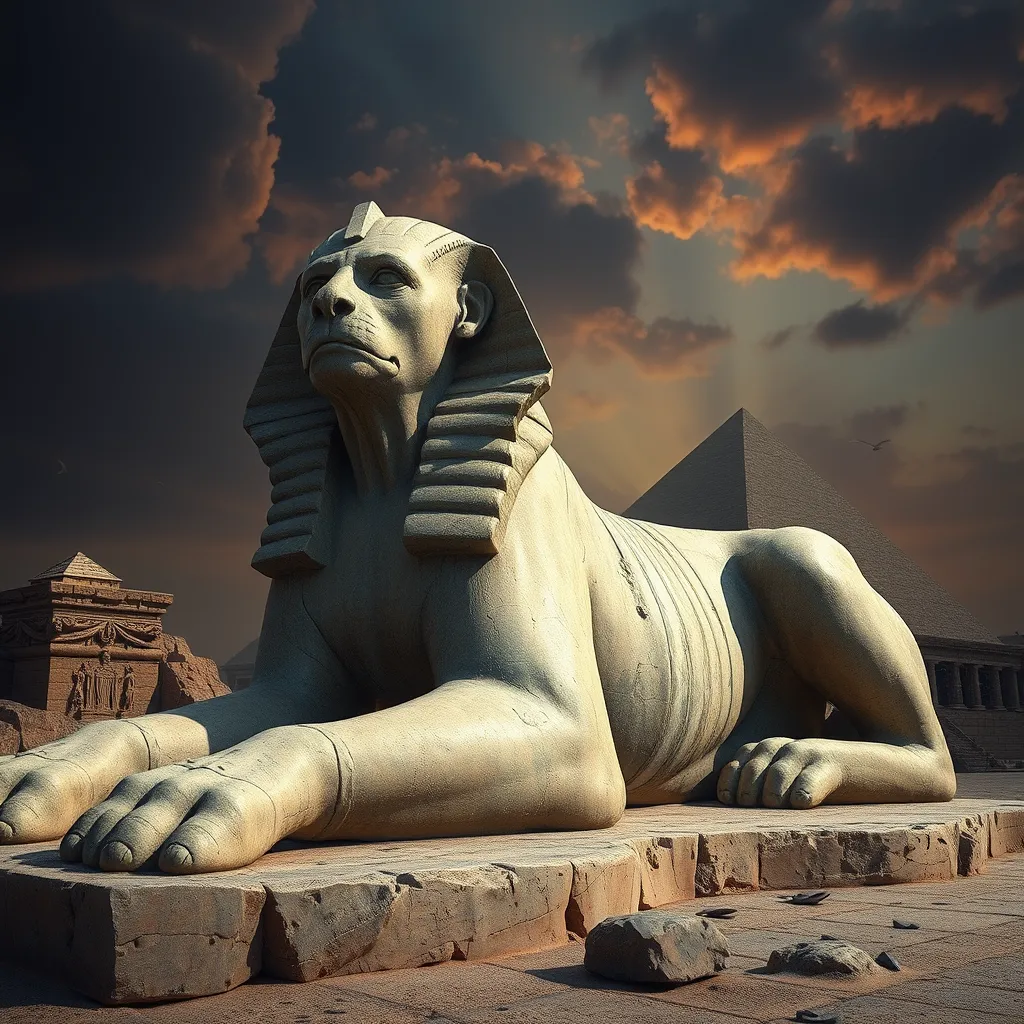The Dybbuk’s Escape: A Tale of Liberation from the Spirit’s Grip
I. Introduction
The Dybbuk, a concept rooted deeply in Jewish folklore, represents the restless spirit of a deceased person who, unable to find peace, possesses the body of a living individual. This haunting figure encapsulates the fears and anxieties surrounding death, the afterlife, and spiritual unrest. The tale of the Dybbuk is not merely a ghost story; it holds profound significance in both cultural and spiritual contexts, highlighting the struggles between the living and the dead, as well as the importance of spiritual liberation.
At the heart of the Dybbuk’s narrative is the central theme of liberation from spiritual possession. This tale serves as a reminder of the resilience of the human spirit and the power of community in confronting and overcoming darkness.
II. Understanding the Dybbuk
The origins of the Dybbuk can be traced back to Jewish mysticism and Kabbalistic teachings. It is believed that the Dybbuk emerges from a soul that has not fulfilled its earthly obligations or has experienced significant trauma. The cultural significance of the Dybbuk lies in its representation of unresolved issues, whether personal or communal, that can impact the living.
Characteristics of a Dybbuk include:
- Possession of a living person, often manifesting through erratic behavior.
- A deep connection to the emotions and experiences of the deceased individual.
- Resistance to exorcism, often requiring significant spiritual intervention.
Common beliefs surround the Dybbuk, including:
- That it can inhabit anyone, regardless of their spiritual state.
- That it can be exorcised through specific rituals performed by trained leaders.
- That its presence can indicate unresolved issues within the family or community.
III. The Encounter: A Harrowing Possession
Our protagonist, Miriam, a young woman from a tight-knit Jewish community, had always been sensitive to the spiritual realm. She grew up hearing stories of the Dybbuk from her grandmother, who warned of its malevolent grasp. One fateful evening, while visiting her grandmother’s grave, Miriam felt an overwhelming chill and a sudden shift in her surroundings. It was in that moment she encountered the Dybbuk.
The initial encounter was disorienting. Miriam found herself enveloped in darkness, her thoughts clouded, and her emotions spiraling out of control. The Dybbuk’s presence was suffocating, leaving her feeling isolated and fearful. The psychological and emotional impact of possession was profound; she felt as though she were losing her identity, replaced by the sorrow and unresolved pain of the spirit.
IV. The Struggle for Control
As days turned into weeks, Miriam engaged in an internal battle against the Dybbuk. She struggled to maintain her sense of self while battling the intrusive thoughts and emotions that the spirit projected onto her. Her family and community began to notice the changes in her demeanor, marking the first signs of spiritual turmoil. Friends who once found her vibrant and joyful now saw a shadow of her former self.
Recognizing the possession, her family rallied around her, offering support and prayers. Signs of the Dybbuk’s influence included:
- Uncharacteristic outbursts of anger and sadness.
- Isolation from friends and family.
- Visions and hallucinations related to the spirit’s past.
V. Seeking Help: The Path to Liberation
Desperate for relief, Miriam and her family sought the help of a local rabbi, known for his knowledge of traditional exorcism practices. The rabbi outlined the steps necessary to confront the Dybbuk, emphasizing the importance of faith, community support, and ritual. These practices often involved:
- Gathering community members for collective prayers.
- Performing a ritual called Shmira, where family members would keep vigil over the possessed individual.
- Utilizing sacred texts and symbols to create a protective barrier.
With the rabbi’s guidance, Miriam’s journey toward personal growth began. She started to reclaim her identity, harnessing the strength of her family and community as she faced the darkness within her.
VI. The Climax: Confrontation with the Dybbuk
The pivotal moment arrived during a moonlit ceremony in the local synagogue. Surrounded by her family and community, Miriam faced the Dybbuk head-on. The atmosphere was charged with energy as the rabbi led the ritual, invoking prayers and chants that reverberated through the sacred space.
Techniques employed in the confrontation included:
- The recitation of specific psalms known for their protective qualities.
- Gestures and symbols aimed at binding the spirit, preventing it from escaping.
- Direct communication with the Dybbuk, demanding it reveal its identity and intentions.
The emotional and spiritual stakes were high. Miriam felt the weight of her ancestors and the community pressing upon her, as she fought for her freedom and the peace of the restless soul.
VII. The Aftermath: Life Beyond the Dybbuk
With the Dybbuk finally exorcised, Miriam experienced a profound recovery and transformation. The shadows that once loomed over her were replaced by a newfound clarity and strength. She reflected on her experience, recognizing the lessons learned about resilience, the importance of community, and the necessity of confronting one’s inner demons.
The impact of her liberation extended far beyond her personal life. Relationships with family and friends flourished as she shared her story, fostering a deeper understanding of spiritual struggles within her community. Miriam became an advocate for mental health and spiritual well-being, urging others to seek help in times of crisis.
VIII. Conclusion
The Dybbuk’s significance in folklore transcends mere storytelling; it reflects the complexities of human existence and the spiritual struggles that many face. The narrative of Miriam serves as a powerful reminder of the importance of addressing these struggles in contemporary society. Through the lens of resilience and hope, we find that even in the darkest moments, liberation is possible. The story of the Dybbuk teaches us that the human spirit can triumph over adversity, and that community, faith, and personal growth are vital in overcoming the grip of darkness.




